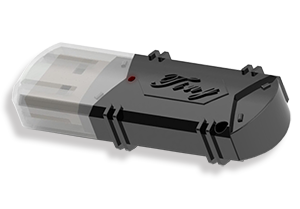Adstefan 2020 Advanced Solidification Test with Sentinel HL Dongle
ADSTEFAN is simulated casting software that precisely simulates the casting process and offers fast and reliable solutions to real casting problems. ADSTEFAN was developed by the Hitachi Research Laboratory in Japan and has sold more than 130 licenses worldwide. Advanced hardening technology for casting, supported by numerical simulation.
ADSTEFAN’s
unique features: 1. Ability to handle very large dimensions generated by STL models. 2. Prediction of cavity shrink by: (a) G / ?R: Niyama Criteria (b) Estimation of size and shape 3. Prediction of temperature in steady die state
(a) Calculation of temperature matrix
(b) Unique way for fast and accurate calculation of steady temperature state of death with the cyclic of equilibrium state of heat (CSM) method 4. Several prediction methods to identify the size of the defect and its location, taking into account the thermal and kinematic interactions between molten metal elements 5. Accurate prediction of thixomoulding process stress and structural deformation.
ADSTEFAN preprocessor module Simplified and integrated hard 3D modeling Automatic FDM network generator CAD (STL) data interface Material properties Database breaker Cyclic stationary heat balance method Filling analysis Field cast arm defect analysis (Niyamacriterion, shrinkage) Thermal stress and deformation analysis
CPU loading sequence, speed and temperature distribution, temperature, melting front, etc. During the curing process Open Architecture facilitates search by other programs / postprocessors. Application: Products: engine block, head, trans. Etc. Process: injection molding, sand molding, Thixomolding etc.
Adstefan 2020 Advanced Solidification
Analyze how the molten metal flows and fills the mold. The fill rate, pressure, temperature change and other parameters can be simulated, for which an optimal plan can be made. Curved surface flow accuracy, which is considered weak by the direct difference method, also undergoes a unique difference correction treatment aimed at improving straightness and accuracy.
In addition, various options are offered, eg. B. Two-phase gas-liquid flow considerations, molten metal behavior in the sleeve, slope considerations and centrifugation considerations.
The tool creates a “failure prediction database” containing several models or rules created by the machine learning process. Training data is used which contains actual information about errors and related analysis results. The use of databases will greatly reduce complex and laborious “assembly” and “interpretation” and improve the accuracy of predicting the probability of failure for new products through automated and objective operations.



